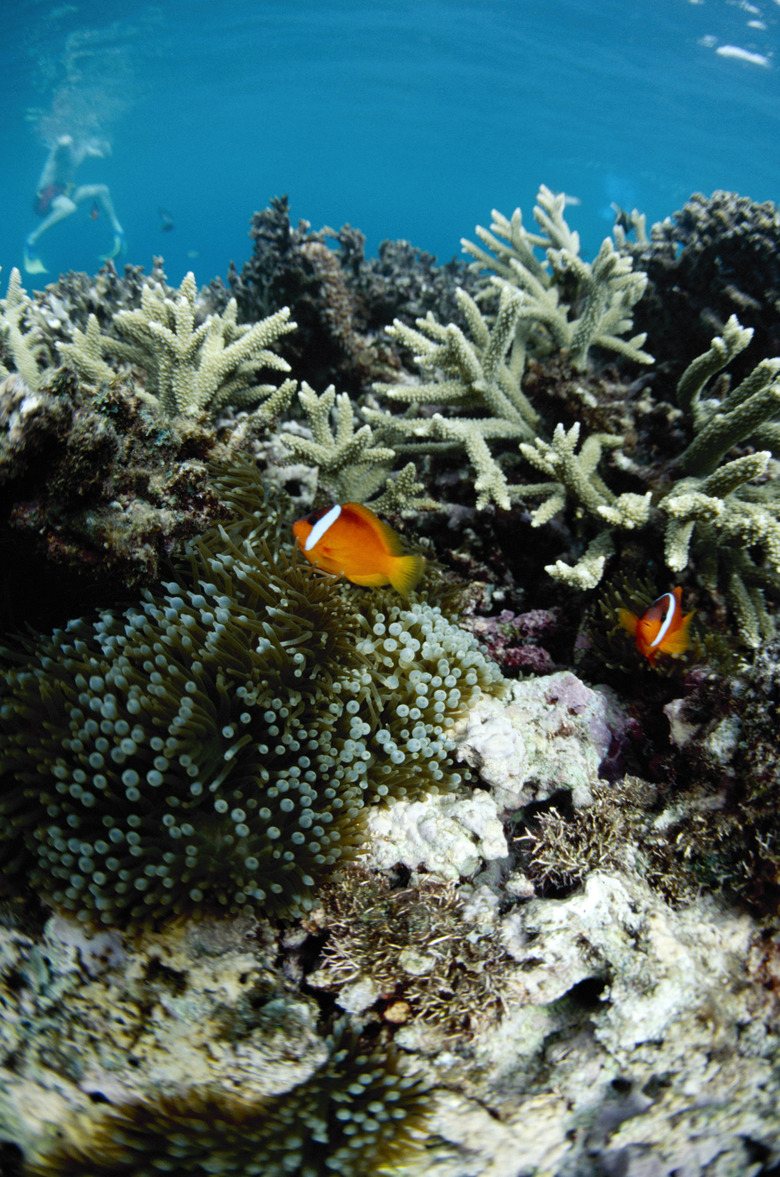How Does Salinity Affect The Solubility Of Oxygen In Water?
The salinity of any liquid is an estimate of the concentration of dissolved salts that it holds. For fresh water and seawater, the salts in question usually are sodium chloride, known as common salt, together with metal sulfates and bicarbonates. Salinity is always expressed in metric units of a number of grams of salt in one liter of water or by weight as the number of grams of salt per million grams of water (ppm). Atmospheric gases dissolve in fresh water and seawater. The solubility – the ability of a specific gas to dissolve in water – depends on a number of inter-linked variables such as temperature, pressure and the chemical content of the water.
Electrolytes
Electrolytes
Water is a polar molecule. This means that the hydrogen and oxygen components have equal and opposite electric charges. Salt dissolves in water because the water molecules pull apart its component sodium and chloride ions. The resultant solution is called an electrolyte because it can conduct electricity. Pure water is a poor electric conductor.
Salting Out
Salting Out
The ability of water to dissolve gases decreases with the addition of electrolytes. Salt ions attract water molecules leaving fewer hydrogen and oxygen ions available to capture and disassociate gas molecules. The carbon dioxide content of a carbonated drink will fizz out if salt is added to it. This is "salting out" and it varies according to the composition of the salt.
Dissolved Oxygen
Dissolved Oxygen
Oxygen comprises 20.9 percent of atmospheric gases but its solubility in water is much lower. Under normal circumstances, about 12 parts of oxygen can dissolve in one million parts of water. The sources of this oxygen are the atmosphere and plant photosynthesis that produces oxygen as an end-product. A high concentration of plant life in water can push dissolved oxygen levels to 20 ppm.
Temperature
Temperature
Higher temperatures decrease the ability of water to dissolve oxygen. Bubbles of air emerging from boiling water demonstrate this effect.
Fresh Water
Fresh Water
Rivers, streams and other fresh water systems typically have an oxygen concentration of 6 ppm or greater. Fish and other fresh water aquatic organisms cannot survive below oxygen concentration of 4 ppm.
Seawater
Seawater
Sodium and chloride ions make up 85 percent of the dissolved ions in seawater. Seawater salinity increases in regions, such as polar regions, where evaporation is greater than precipitation. The lower temperatures of polar regions also work to increase seawater salinity. The greater precipitation in equatorial regions, together with higher temperatures, decreases seawater salinity and enables higher oxygen content in these waters.
Cite This Article
MLA
Kielmas, Maria. "How Does Salinity Affect The Solubility Of Oxygen In Water?" sciencing.com, https://www.sciencing.com/info-10024026-salinity-affect-solubility-oxygen-water/. 9 January 2018.
APA
Kielmas, Maria. (2018, January 9). How Does Salinity Affect The Solubility Of Oxygen In Water?. sciencing.com. Retrieved from https://www.sciencing.com/info-10024026-salinity-affect-solubility-oxygen-water/
Chicago
Kielmas, Maria. How Does Salinity Affect The Solubility Of Oxygen In Water? last modified March 24, 2022. https://www.sciencing.com/info-10024026-salinity-affect-solubility-oxygen-water/
